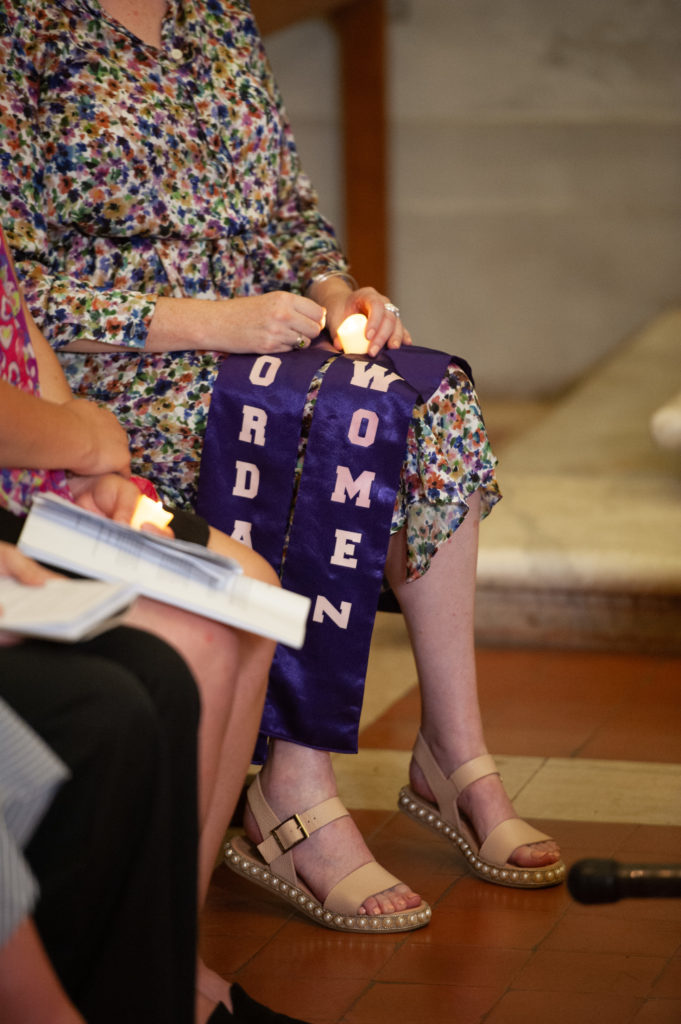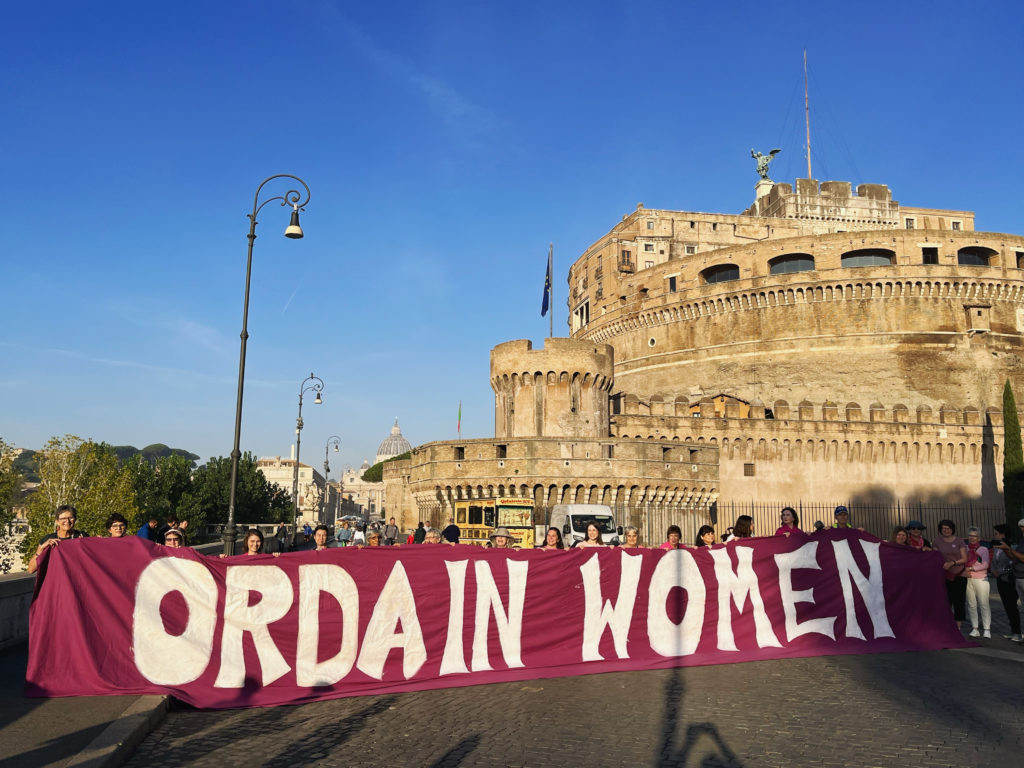Process or Parliament?
After watching the US House of Representatives self-destruct on Tuesday, I’ve had it with parliaments. I trust the processes of the synod much more.
That’s how I answer the first discussion question Commonweal poses about Shaun Blanchard’s article, Synodality & Catholic Amnesia: “If you had to describe the Synod on Synodality to someone who knew nothing about it, what would you say?” I say it’s the victory of the process people over the hierarchy.
I’ve read everything the synod office has put out from the very beginning, and I’ve seen the not always subtle changes along the way to get to the pages of worksheets that conclude the Instrumentum Laboris. Its first 26 pages explain everything in words and clever diagrams (process people love those!), and the remaining 34 pages try to pull from the various documents generated around the world fifteen BIG “Questions for discernment” and then offer “Suggestions for prayer and preparatory reflection” that are often also in the form of questions.
I thought I’d remind you of what’s supposed to be happening – lay people and bishops at round tables talking to each other about BIG Questions and gathering in some larger plenary sessions, too – because I’m sure you’ve been distracted by the remarkable media campaign of Women’s Ordination Worldwide. If somehow you’ve missed the enormous purple banner or yesterday’s Walk with Women, you can find them here. Don’t miss the inspiring prayer service that gives meaning to the activism, either. WOW and WOC captured the attention of the world and our hearts.
Five disgruntled Cardinals helped our cause. While often the headlines emphasized the LGBTQ+ issues they objected to, Kate McElwee was the one on the scene for an interview. She explained women’s ordination – and often the synod itself. The narrative was ours.
My friends here – to get back to that original Commonweal question – then ask, are you inside? Of course, I have to answer not really, but then I say those five Cardinals are not, either. The boost they gave our cause was to release their “dubia” or doubts right before the opening of the Synod. Suddenly they were the ones defining what the Synod was about, and it was easier for the media to focus on women and “same-sex unions” than the structure of authority in a hierarchical church. As I said, the narrative was ours.
And it seemed to be supported by the Pope. Not to be done in by the five, he immediately released his response to their dubia. While he could be really annoyed with them, Francis had to be careful about women. He could not afford to dismiss this pesky issue he wished would just go away. It had been too frequently mentioned around the world. So he punted:
- …It is not appropriate to assert a difference in degree that implies considering the common priesthood of the faithful as something of a “second class” or of lesser value (“a lower grade”). Both forms of priesthood illuminate and support each other…
- When St. John Paul II taught that we must affirm “definitively” the impossibility of conferring priestly ordination on women, he was in no way denigrating women and giving supreme power to men. St. John Paul II also affirmed other things. For example, when we speak of priestly authority, “we are in the realm of function, not of dignity and holiness” (St. John Paul II, Christifideles laici, 51), words that we have not sufficiently embraced…If this is not understood, and practical consequences are not drawn from these distinctions, it will be difficult to accept that the priesthood is reserved only for men, and we will not be able to recognize the rights of women or the need for them to participate in various ways in the leadership of the Church.
- On the other hand, to be rigorous, let us recognize that a clear and authoritative doctrine on the exact nature of a “definitive statement” has not yet been fully developed. It is not a dogmatic definition, and yet it must be adhered to by all. No one can publicly contradict it and yet it can be a subject of study, as with the case of the validity of ordinations in the Anglican Communion.
Francis is definitely searching for language in a way that he’s not in the rest of his response, especially in the muddled middle of b, which you can read for yourself and perhaps make more sense of than I can. And I say, as Kate McElwee did so many times in the last few days, c is another crack in the stained-glass ceiling.
That first Commonweal question concludes with “Do you feel like you have a proper understanding of the synod, its purpose, its ecclesiology, and its history? How does this essay expand your understanding?” I learned what Shaun Blanchard, who teaches at the University of Notre Dame in Australia, means by “Catholic Amnesia.” For most of my adult life, I’ve rejected Vatican I, and now I have real historical arguments for why. It wiped out the memory of a long and persistent conciliar tradition in favor of centralized papal authority. This synodal history I learned only as manifest in the early church, not as it continued for centuries.
Yet our moment is not without irony. I hope Blanchard’s conclusion encourages you to read the entire article:
Pope Francis should be commended for taking the Council as a point of departure for the pilgrim Church and trusting that the Holy Spirit is active in the heart of every baptized person. Modern Catholicism is shot through with ironies. The extreme papalism that was ascendant in much of the Catholic world from the middle of the nineteenth century is obviously antithetical to the vision of synodality now being vigorously promoted by a pope, of all people. But perhaps only the Roman Pontiff, with his universal and immediate jurisdiction over every Catholic and every local church, can jolt Catholicism back to a more ancient and more biblical constitution. Pope Francis’s intentional creation of a synodal “mess” may be the only way to unravel the ultramontane paradigm. A paradoxical situation to be sure, and a risky one. But one not without hope.
Blanchard calls the participants in the synod, those on the inside, “witnesses,” not delegates or representatives. That’s what the Pope is trying to say in his homily at the Synod’s opening mass: “it is not a political gathering, but a convocation in the Spirit; not a polarized parliament, but a place of grace and communion. The Holy Spirit often shatters our expectations to create something new that surpasses our predictions and negativity.”
Let us watch and pray.



One Response
Process. Discernment. The Marian dimension is key. The Annunciation is the beginning of the end of patriarchy, including religious patriarchy.